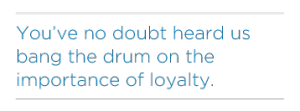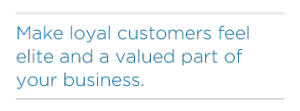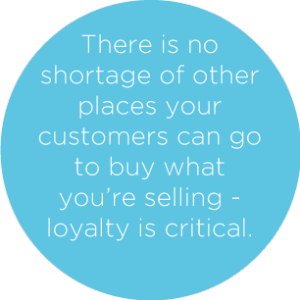Push notifications are largely viewed as a great mobile marketing tactic, albeit one with great questions about their use and best practices. But are they having a significant impact? We decided to take a look at the state of push messaging in 2015 to find out.
Over the course of the year, push messages continued to improve app user engagement and retention and companies increasingly took the path to personalization. This is largely due to the the shift away from broadcast marketing to an increased adoption of a segmented push strategy, which uses all the data a company has about a user to inform a smart marketing approach. While push messages showed improvement around respecting user data, a recent consumer survey we conducted revealed that 52% of app users are already finding push messages to be an “annoying distraction.”
As more marketers turn to push notifications to communicate with users, the bar continues to rise for them to be hyper relevant (to avoid going the way of email spam). The good news: our data shows that apps are rising to match these higher expectations, and the results of their efforts are improving engagement and retention.
Push Messages Continue to Influence User Engagement
One of the most effective uses of push messages is to encourage inactive users to re-engage with an app. When crafted as a friendly reminder or helpful tip, push notifications can better position an app in the minds of users. The numbers are truly telling of just how effective push messages are in this pursuit for engagement. In 2015, users who enabled push notifications launched an app an average of 14.7 times per month, whereas users who did not only launched an app 5.4 times per month. In other words, users who opted in to push messages averaged 3x more app launches than those who opted out.

This represents a 171% increase in app engagement. In 2014, the increase in engagement between users who opted in versus those who didn’t was 88%. Push messages serve an important role in an app’s user engagement, and there are no signs pointing to a decrease any time soon.

Build Trust Before Asking For Permission
Before an app can reap all the engagement benefits push messages have to offer, it must get users to agree to receive them. This has shown to be more difficult over the past year, as the average opt in rate for push messages in 2015 was 49.8%, down from 52% in 2014.

The decrease in push opt-ins may scare some, but it is not a reason to panic. Rather, this is an opportunity to find smarter ways to get users to agree to opt in. One place to start: build trust.
We’ve outlined before just how important it is to build trust with users before blasting them with push messages. One way to do so is to give a user time to explore the app before asking him/her to enable push messages. The chart below shows that the average push opt-in rate improved when users completed more sessions in an app. Users who complete between 1 and 3 sessions in an app have an average opt in rate of 35%. That rate doubles to 70% when users complete between 4 and 6 sessions in an app.

It doesn’t take too long to establish trust with users, but try to not ask for permission to enable push messages as soon as the app is downloaded. In the beginning, users know very little about the app and therefore will not have a good idea as to what the push messages will be telling them, or the value that will be delivered.
Retention Continues to Thrive Thanks to Push Notifications
Push messages also help apps avoid one of their biggest fears: user churn. Utilizing push messages sets an app up to retain users both in the short and long terms. Push notifications remind users to continually return to an app, which helps keep it top of mind and strengthens relationships throughout the user life cycle.

On average, 65% of users returned to an app in the 30 days after the app’s initial download, if they have push enabled. On the other hand, for users who did not have push enabled, only 19% of them returned the following month. By the third month, one third of users with push enabled were still using the app, compared to only 11% of users who do not receive push messages.
In 2015, retention for apps in which users enabled push increased throughout the first 3 months following download as compared to 2014; this suggests that app marketers used push messages more and the actual messages were more effective.

Users Are Responding More to Push Messages
One metric app marketers use to measure the success of their push messages is the average click through rate. For 2015, the average for push messages was 10.2%, a two percentage point increase from 2014.

Increasing click through rates supports the idea that push messages are becoming more relevant to users. But with every relevant push, the bar has risen for all push notifications to meet users’ needs. As a result, apps must continuously learn about their audiences in order to better serve them.
Push Messages Increasing in Numbers and Intelligence
As push messages continued to benefit apps in more ways than one, app publishers sent them more and more. The number of push messages increased 64.25% since the end of Q1 2015, to an average of 51 push messages sent per app. These messages are sent to various audiences of the app, so users are not receiving all 51 push messages.

The average number of push messages sent per app has steadily increased every quarter since the beginning of 2014. While that could be viewed as negative, our data actually shows that as the volume of messages has increased, marketers have also gotten smarter. This can be seen below as segmented push messages have continued to increase while broadcast messages are starting to become a thing of the past.

Since January, segmented push messages have increased from 53.51% to 65.73%, while broadcast messages have decreased from 46.49% to 34.27%. Marketers have taken notice that users are more likely to respond to a message with information that directly affects them, as compared to a message that was sent to all of the app’s users. This puts the pressure on apps to be doing everything they can to gain as much insight into their audiences as possible so that their marketers can better customize the messages.
Personalization Leads to Conversions
The importance of segmented versus broadcast messages can also be seen in view-through conversion rates (defined as users who view a push message and then convert).
For view-through conversion rates, 1% of users converted from broadcast messages, while 3% converted from segmented messages. In other words, users are 3x more likely to complete a conversion event if the message incorporates some kind of personalization.
A Marketer’s Job Is Never Done
Push messages have grown in effectiveness since last year, but there is always more that can be done. The onus is on us as marketers to make sure that push messages do not go the way of email and become spam. As app publishers send more push messages, capturing the attention of users will become increasingly difficult. Marketers will need to focus more on what is working over time by continuing to test different messages, shifting the focus from vanity metrics to those that signify actual ROI and always use audience insights as the root of the message.
With that in mind, we’ll be kicking off 2016 with more data that taps into the current state of consumers’ views on push and reveals the data-driven marketing best practices for segmentation, personalization and measuring performance, as well as some benchmark KPI’s based on vertical platform and the size of the app. Stay tuned!
[contact-form][contact-field label=’Name’ type=’name’ required=’1’/][contact-field label=’Email’ type=’email’ required=’1’/][contact-field label=’Website’ type=’url’/][contact-field label=’Comment’ type=’textarea’ required=’1’/][/contact-form]







 These tiers work best for exclusive loyalty programs when the tiers are tied to a status. You can show status with a special card like Sephora’s VIB card or Starbucks’ Gold Card. Or you can show status by providing upper tier members with special benefits unavailable to those in lower tiers.
These tiers work best for exclusive loyalty programs when the tiers are tied to a status. You can show status with a special card like Sephora’s VIB card or Starbucks’ Gold Card. Or you can show status by providing upper tier members with special benefits unavailable to those in lower tiers.

















 -blocking technology in the upcoming release of iOS 9 puts the
-blocking technology in the upcoming release of iOS 9 puts the 






